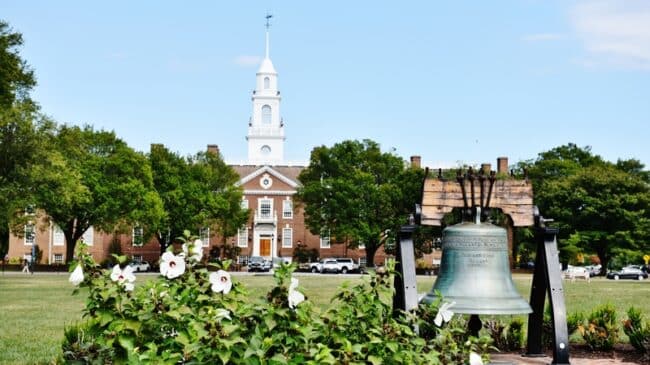K-12 open enrollment, where students are allowed to change which public schools they attend, is an often overlooked school choice policy. While education savings accounts and vouchers attract the most attention, open enrollment helps many students attend schools that are the right fit, especially in blue states like Delaware.
There are two types of open enrollment: cross-district, which lets students attend public schools outside their assigned district, and within-district, which lets students transfer to public schools inside their district but outside their catchment area.
Data provided by the Delaware Department of Education for the 2020-21 school year showed that about 26,000 students, or 22% of publicly funded students, used open enrollment to attend a public school other than their assigned one.
Most open enrollment participants in Delaware–nearly 18,000 students—use the within-district option, representing 15% of students in traditional public schools. Additionally, more than 8,000 students, or 7% of students in traditional public schools, transfer to schools in other districts.
Notably, open enrollment is growing in popularity among Delaware families. Between the 2016-17 and 2020-21 school years, open enrollment participation increased by more than 4,000 students.
Because Delaware’s student counts were nearly stagnant during this time, the increased number of students using open enrollment almost certainly happened because families like being able to choose their child’s public school. About 3,000 more students used open enrollment to attend schools in districts other than their assigned one during the 2020-21 school year than during the 2016-17 school year.
Delaware holds its own compared to other states with similar open enrollment laws, such as Colorado, Florida, and Wisconsin, per Reason Foundation’s national open enrollment scoresheet. In fact, students living in Delaware are almost as likely to use open enrollment as those in Colorado and more than twice as likely to use it as students in Florida and Wisconsin.
Open Enrollment Participation in States with Similar Laws
High open enrollment participation isn’t surprising. National polling by EdChoice-Morning Consult showed that 73% of parents with school-aged children support the policy. Moreover, parents’ support is not based on partisan ties. At least 71% of parents identifying as Republican, Democrat, or independent support it.
Open enrollment is popular because it increases students’ free education options, helping them find schools that are the right fit. For example, some students use it to escape bullying or because they feel unsafe at school. In Delaware, school districts with high rates of out-of-school suspensions and incidents of violence in 2019 lost nearly 2,800 students–38% of all cross-district transfers–through open enrollment.
Research shows that students also use open enrollment to access college prep courses, smaller class sizes, or shorten their commutes. They also use it to access better schools. Data from Florida, Arizona, and Texas show that students tend to transfer to higher-rated school districts.
Delaware’s open enrollment law is among the top 10 nationwide, ranking seventh in a recent Reason Foundation report examining the open enrollment policies in all 50 states. Yet, Delaware policymakers can further improve and strengthen the policy.
Delaware’s open enrollment program can be made more family-friendly if school districts post their available capacity by grade level. This ensures that families looking to transfer know which seats are open.
The Delaware Department of Education should also publish an annual open enrollment report showing district-level data, such as the number of transfers, rejected applicants, and why they were denied. Policymakers, families, and taxpayers can use this information to hold school districts accountable for their open enrollment practices.
Delaware’s open enrollment program gets a lot right and deserves praise. However, policymakers can do more to make the open enrollment process more transparent and fair.

